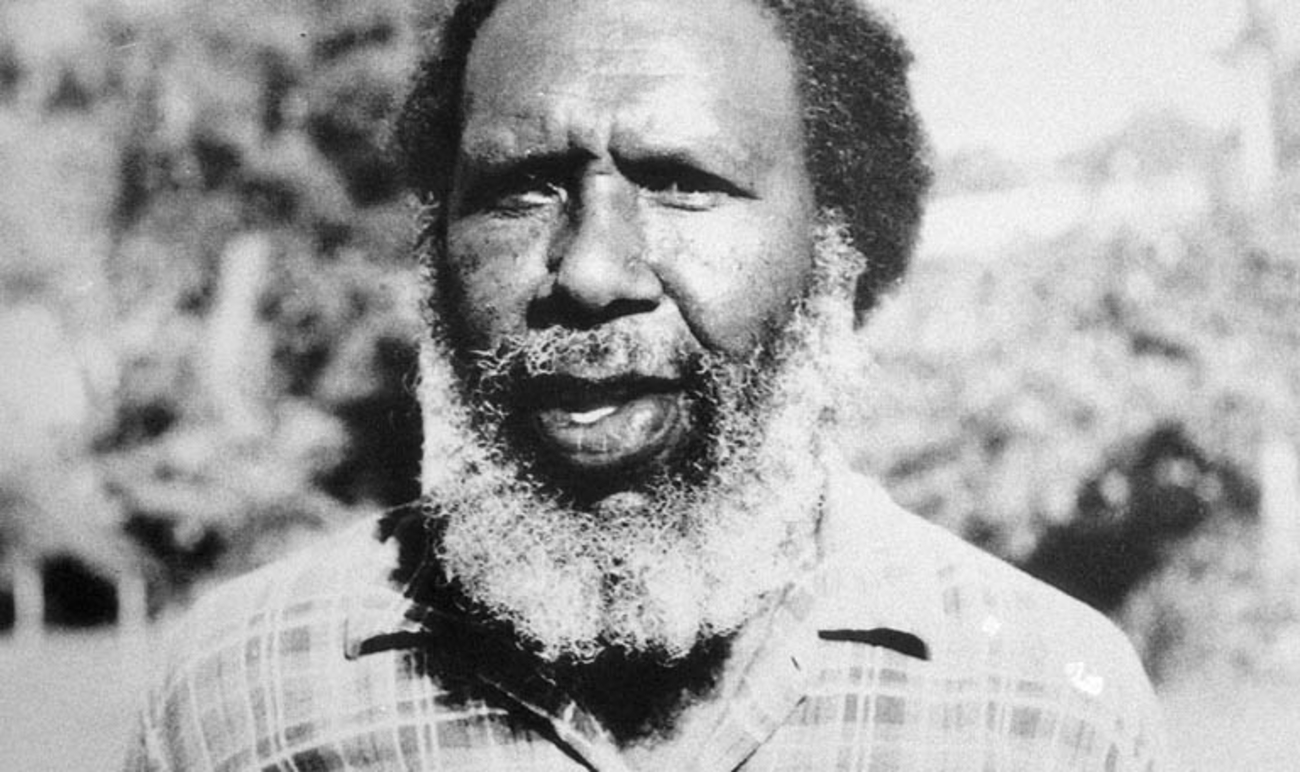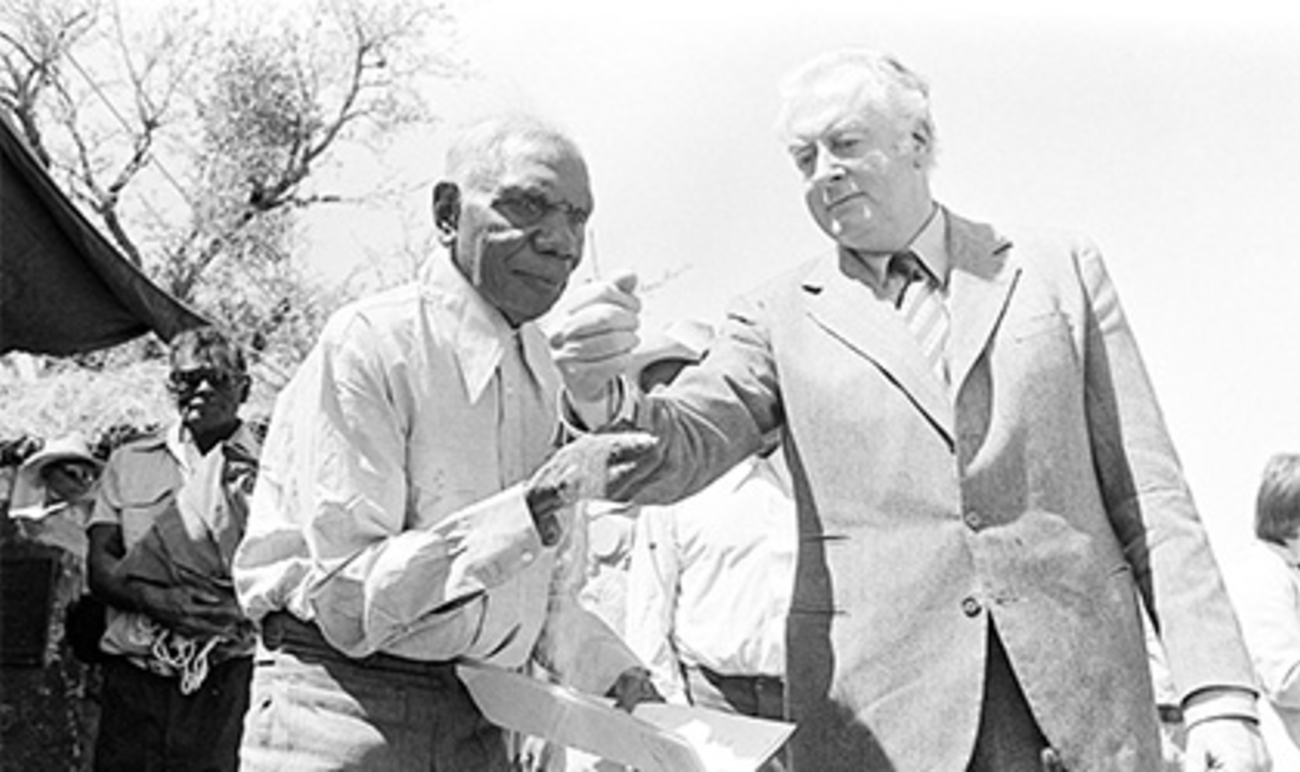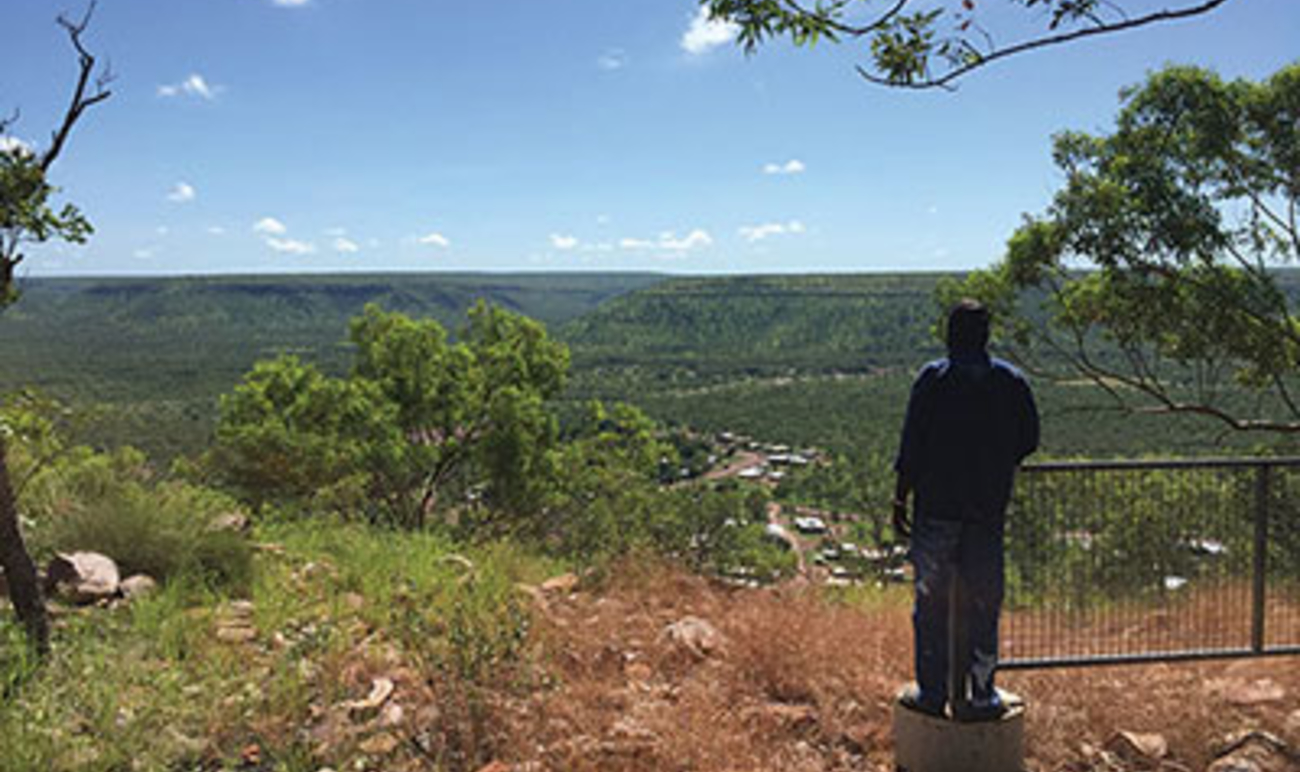Key points
- The Mabo Case was a significant legal case in Australia that recognised the land rights of the Meriam people, traditional owners of the Murray Islands (which include the islands of Mer, Dauer and Waier) in the Torres Strait.
- The Mabo Case was successful in overturning the myth that at the time of colonisation Australia was ‘terra nullius’ or land belonging to no one.
- The High Court recognised the fact that Indigenous peoples had lived in Australia for thousands of years and enjoyed rights to their land according to their own laws and customs. Twelve months later the Native Title Act 1993 (Cth) was passed
- The five Meriam people who mounted the case were Eddie Koiki Mabo, Reverend David Passi, Sam Passi, James Rice and one Meriam women, Celuia Mapo Sale. Eddie Koiki Mabo was the first named plaintiff and the case became known as the Mabo Case.
Running the case
Legal proceedings for the case began on 20 May 1982, when a group of four Meriam men, Eddie Koiki Mabo, Reverend David Passi, Sam Passi, James Rice and one Meriam woman, Celuia Mapo Sale, brought an action against the State of Queensland and the Commonwealth of Australia, in the High Court, claiming 'native title' to the Murray Islands.
The Mabo Case challenged the existing Australian legal system from two perspectives:
- On the assumption that Aboriginal and Torres Strait Islander peoples had no concept of land ownership before the arrival of British colonisers in 1788 (terra nullius).
- That sovereignty delivered complete ownership of all land in the new Colony to the Crown, abolishing any existing rights that may have existed previously.
On 27 February 1986, the Chief Justice, Sir Harry Gibbs, sent the case to the Supreme Court of Queensland to hear and determine the facts of the claim. The Supreme Court judge hearing the case was Justice Moynihan. The hearing was adjourned when Eddie Mabo and the people of Mer brought a second case to the High Court challenging the constitutional validity of the Queensland Coast Islands Declaratory Act 1985.
The Queensland Parliament passed the Queensland Coast Islands Declaratory Act 1985 in an attempt to pre-empt the Meriam peoples’ case. The aim of the legislation was to retrospectively extinguish the claimed rights of the Meriam people to the Murray Islands.
As a result, the High Court had to consider whether the Queensland legislation was valid and effective. The High Court found the Queensland Coast Islands Declaratory Act to be invalid because it was in conflict with the Racial Discrimination Act 1975. This case became known as Mabo v. Queensland (No. 1) and the decision meant the original case could continue.
Justice Moynihan resumed the hearing of the facts in the case presented by Eddie Mabo and the people of Mer with sittings taking place on Murray Island as well as on the mainland.
‘After some argument Moynihan J accepted the plaintiffs’ request that the court should adjourn and reconvene on Murray Island for three days, to take evidence, particularly from 16 witnesses, mainly elderly and frail, and also to take a view of the claimed areas of garden plots and adjacent seas… When opening proceedings on the Island on 23 May 1989, Moynihan J ‘doubted [whether] the Court has ever sat further north or perhaps further east’, and certainly never before on Murray Island. On 26–27 May 1989 the Court also sat in the Magistrates’ Court of Thursday Island and heard five Islander witnesses. The visit, as Moynihan J noted in his opening statement, provided a better understanding of the evidence, and of island life. It also revealed the first opposition from some Islanders to the claims being made: two Islanders were called by Queensland during these sittings to oppose Eddie Mabo’s claims.’ – Brian Keon-Cohen, Barrister[i]
Justice Moynihan handed down his determination of facts on 16 November 1990, which meant the High Court could begin it’s hearing of the legal issues in the case.
The case presented by Eddie Mabo and the people of Mer successfully proved that Meriam custom and laws are fundamental to their traditional system of ownership and underpin their traditional rights and obligations in relation to land.
The decision
On 3 June 1992, six of the seven High Court judges upheld the claim and ruled that the lands of this continent were not terra nullius or ‘land belonging to no-one’ when European settlement occurred, and that the Meriam people were 'entitled as against the whole world to possession, occupation, use and enjoyment of (most of) the lands of the Murray Islands'.
In Mabo v. Queensland (No. 2), judgments of the High Court inserted the legal doctrine of native title into Australian law. The High Court recognised the fact that Indigenous peoples had lived in Australia for thousands of years and enjoyed rights to their land according to their own laws and customs. They had been dispossessed of their lands piece by piece as the colony grew and that very dispossession underwrote the development of Australia as a nation.
The new doctrine of native title replaced a seventeenth century doctrine of terra nullius on which British claims to possession of Australia were justified on a wrongful legal presumption that Indigenous peoples had no settled law governing occupation and use of lands. In recognising that Indigenous peoples in Australia had prior rights to land, the Court held that these rights, where they exist today, will have the protection of the Australian law until those rights are legally extinguished.
Brian Keon Cohen recalls:
'I rang Murray Island — that is to say, I rang the phone box located, as readers will recall, outside the general store. The conversation went something like this:
"Hello, Bryan Keon-Cohen here, who’s that?"
[Inaudible.]
"Do you remember Eddie Mabo’s case, that court case about land?"
"Yes."
"Well, I’m ringing you from that Court in Canberra where those top judges are, you know, that High Court."
"Oh yes."
"Well, those judges, they told us their decision just now: Eddie won. You Murray Islanders have won that court case. You own the island under your laws and custom."
[Screams of what I took to be joy, laughter, yelling, much discussion in the background.]
"Hello! Hello! Is anyone there?" says I.
"Oh thank you, thank you, we are very happy, I have to go and tell my Mum. Goodbye."
"Bye. See ya."'
– Brian Keon-Cohen[ii]
The High Court decision in the Mabo v. Queensland (No.2) altered the foundation of land law in Australia and the following year the Native Title Act 1993 (Cth), was passed through the Australian Parliament. This opened the way for claims by Aboriginal and Torres Strait Islander peoples to their traditional rights to land and compensation.



